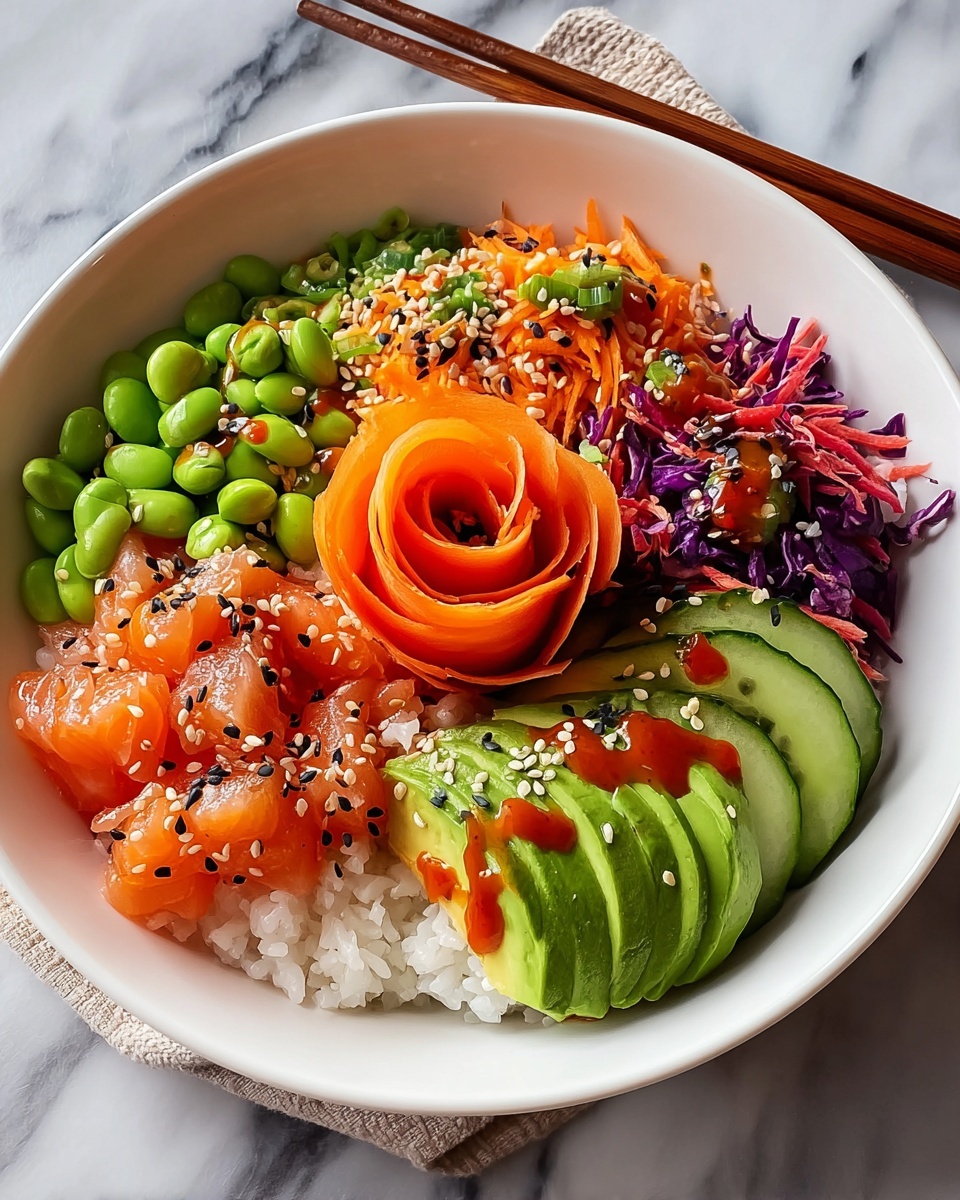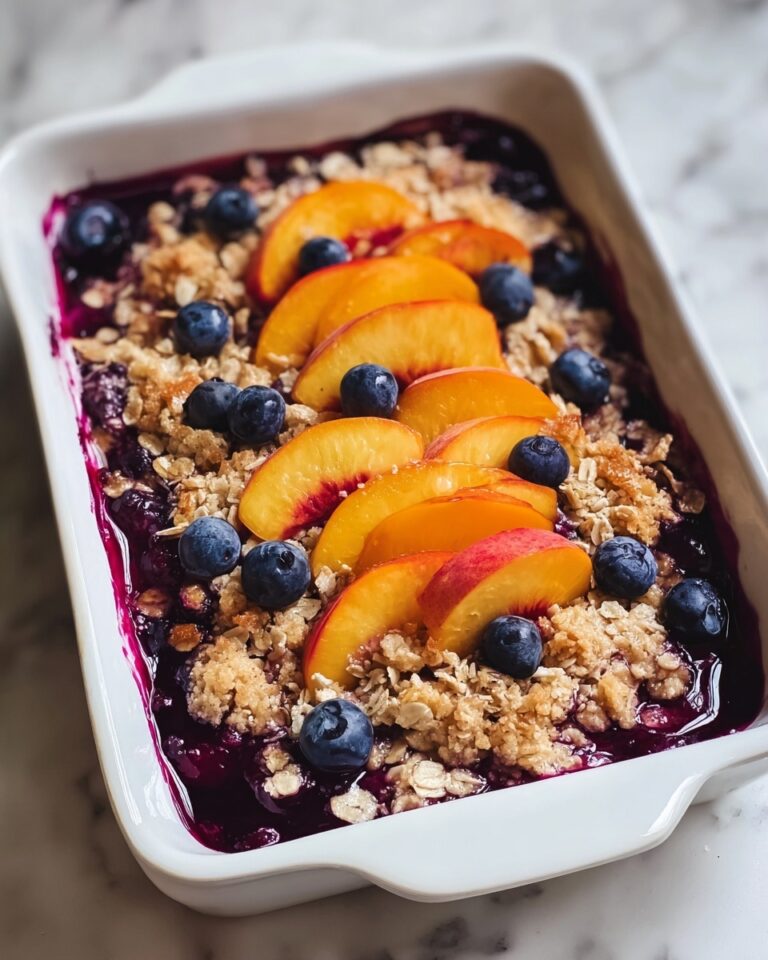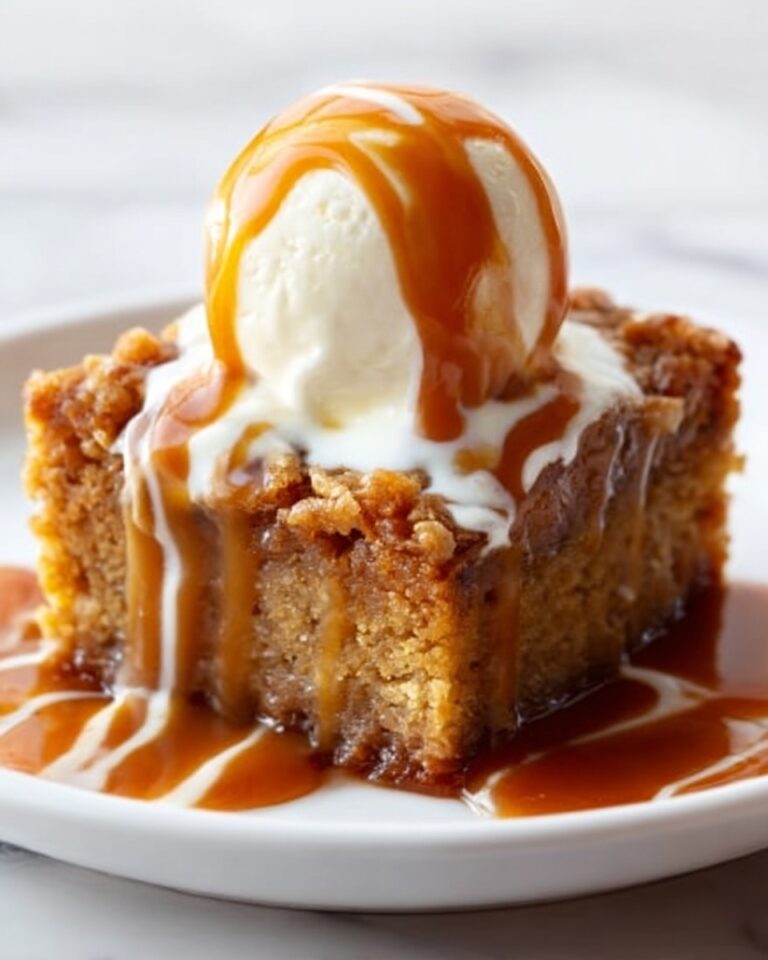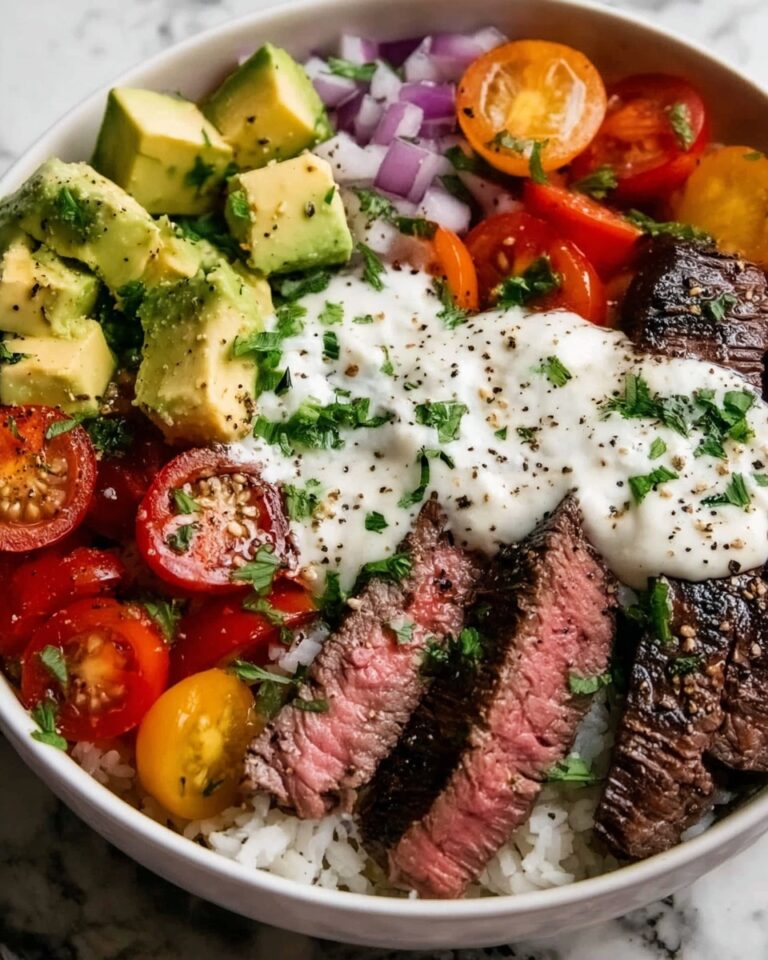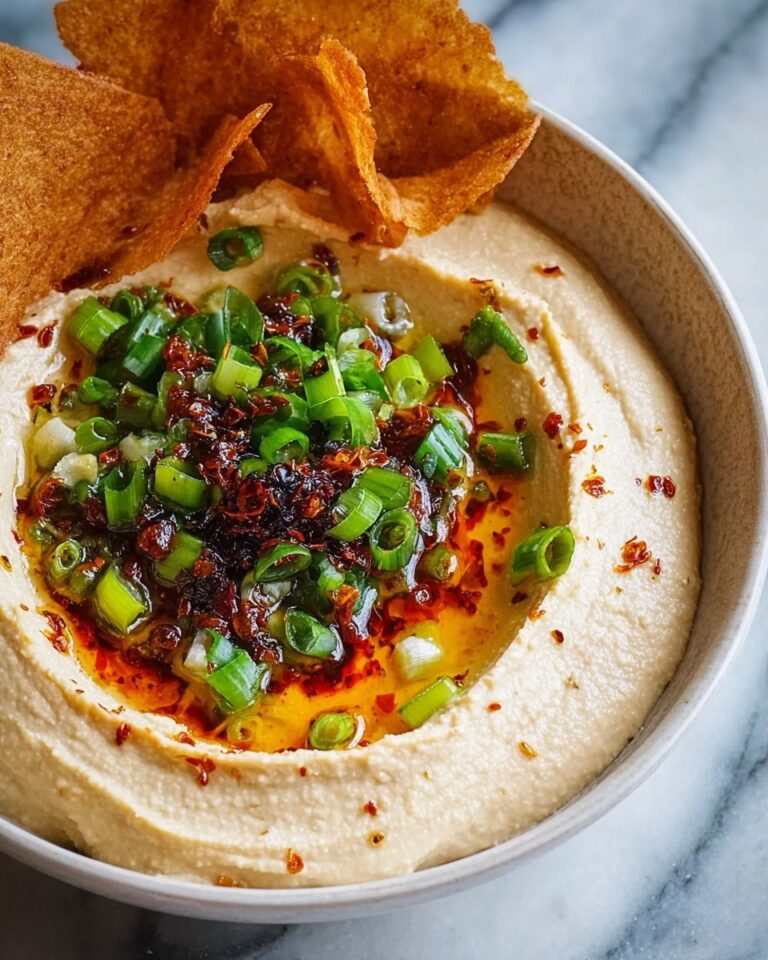If you’ve been craving the fresh, vibrant flavors of sushi without the fuss of rolling, you are going to LOVE this Veggie Sushi Bowls Recipe. It takes all the best parts of your favorite veggie sushi rolls—the crisp cucumber, creamy avocado, bright red bell pepper, and more—and presents them beautifully over perfectly seasoned sushi rice. This dish balances color, texture, and flavor in every single bite, making it a delightful, wholesome meal that’s easy to prepare any night of the week.

Ingredients You’ll Need
These ingredients might seem simple, but each one plays a vital role in building the perfect balance of taste, texture, and color in our Veggie Sushi Bowls Recipe. From the fluffy sushi rice to the crunchy veggies and tangy sauces, they all come together to create magic.
- Sushi rice: The heart of the bowl, providing a sticky, tender base that soaks up all the flavors.
- Rice vinegar: Gives the rice that iconic slightly sweet, tangy sushi flavor that wakes up the palate.
- Cucumber: Adds a refreshing crunch and bright green color for visual appeal.
- Avocado: Offers luscious creaminess that contrasts perfectly with crisp veggies.
- Red bell pepper: Brings sweetness and a pop of vibrant red, making the bowl irresistibly colorful.
- Carrot: Adds sweetness and a satisfying crunch with beautifully thin julienne cuts.
- Snow peas: Thinly sliced to provide a crisp bite and fresh green hues.
- Edamame: Protein-packed, tender, and slightly nutty for a great textural addition.
- Pickled ginger: Offers a zesty, slightly spicy kick that cleanses the palate.
- Nori seaweed strips: Brings that unmistakable umami flavor and texture.
- Soy sauce (or tamari): The savory base for the flavorful homemade sauce.
- Sesame oil: Adds a toasted almost nutty aroma essential to sushi dishes.
- Honey or maple syrup: Balances the tangy and salty with a little sweet touch.
- Fresh ginger and garlic: Bring warmth and a subtle bite to the sauce.
- Red pepper flakes: Optional, for those who love a hint of heat.
- Sesame seeds, sriracha mayo, everything bagel seasoning, wasabi: All fantastic toppings to customize your bowl and make it truly your own.
How to Make Veggie Sushi Bowls Recipe
Step 1: Rinse and Cook the Rice
Start by rinsing the sushi rice under cold water until it runs clear. This crucial step removes excess starch and prevents the rice from becoming gummy. Then, cook the rice with water by boiling it, lowering the heat, covering it, and simmering for about 18 minutes until perfectly tender.
Step 2: Prepare the Sushi Vinegar
While the rice cooks, gently warm rice vinegar, sugar, and salt together until everything dissolves. This sweet and tangy mixture is what gives sushi rice its signature flavor, so don’t skip this important step.
Step 3: Season and Cool the Rice
Transfer the hot cooked rice to a non-metallic bowl and fold in the sushi vinegar with care, taking your time so the rice grains stay intact. Use a fan or a piece of cardboard to cool the rice while folding to give it that lovely glossy texture and room temperature ideal for your bowls.
Step 4: Prep Your Veggies
Dice the cucumber, bell pepper, and avocado (toss avocado with a splash of lemon or lime juice to prevent browning). Julienne or shred the carrot, thinly slice snow peas, and cook or thaw and shell the edamame. Don’t forget the pickled ginger and nori cut into thin strips; they add so much character and flavor depth.
Step 5: Whisk Together the Flavorful Sauce
In a small bowl, combine soy sauce, rice vinegar, sesame oil, honey or maple syrup, grated ginger, minced garlic, and red pepper flakes if you like a little spice. This sauce will drizzle over your veggie sushi bowls, tying all the ingredients together in perfect harmony.
Step 6: Assemble the Veggie Sushi Bowls Recipe
Divide your seasoned sushi rice into four bowls, then artfully arrange the diced and sliced vegetables all around. Drizzle the sauce generously over the rice and veggies, sprinkle with nori strips, sesame seeds, and add your choice of sriracha mayonnaise, everything bagel seasoning, or a dab of wasabi for that extra kick.
Step 7: Serve Fresh and Enjoy
Veggie Sushi Bowls are best enjoyed immediately when all the textures and flavors are at their freshest and brightest. Grab a pair of chopsticks, dig in, and savor every colorful bite.
How to Serve Veggie Sushi Bowls Recipe
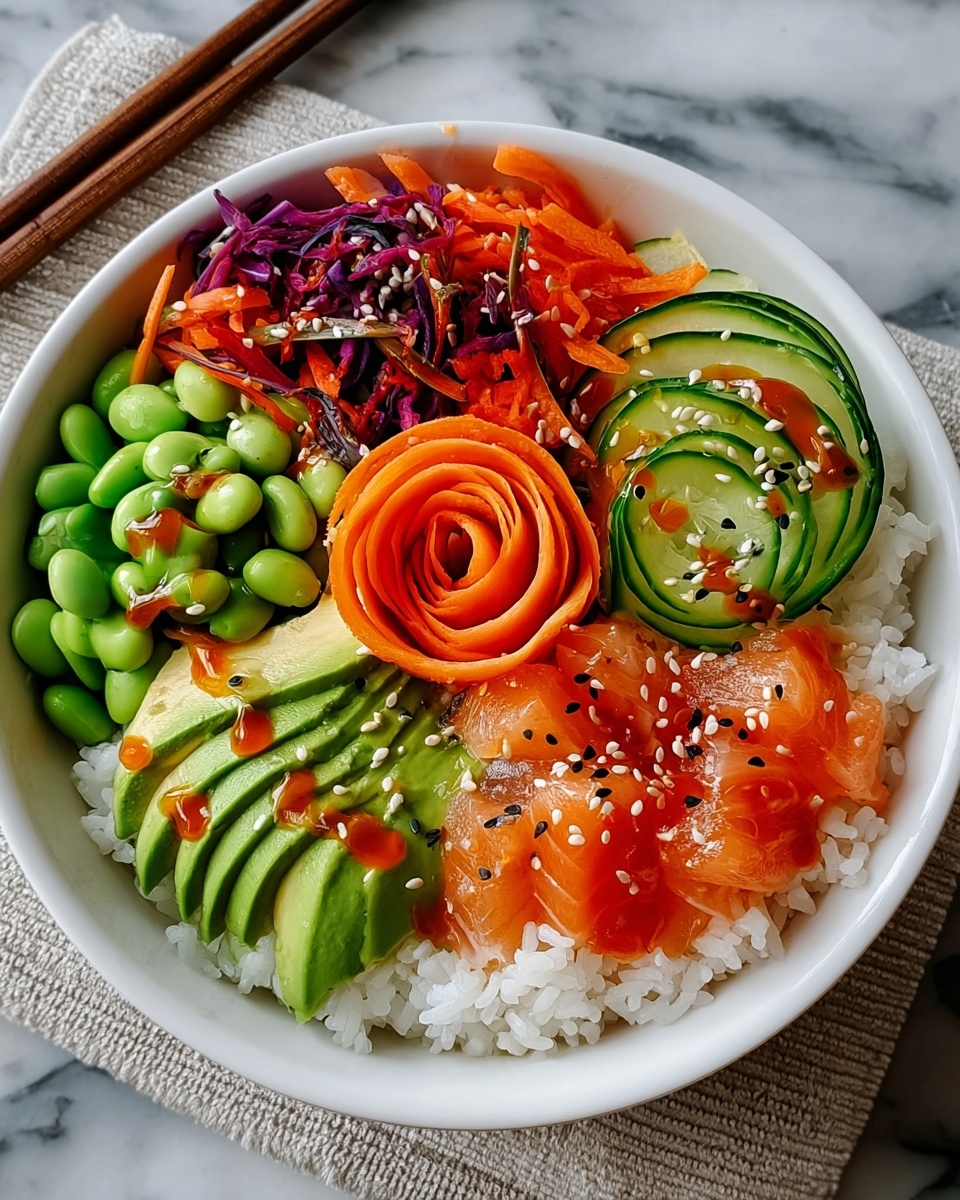
Garnishes
Garnishes make your bowl not only prettier but take the flavors to the next level. Sprinkle toasted sesame seeds for nuttiness, add a drizzle of spicy mayo for creaminess and heat, or scatter some everything bagel seasoning for a savory crunch. A little dab of wasabi brings heat and authenticity if you’re feeling bold.
Side Dishes
Pairing your Veggie Sushi Bowls Recipe with simple sides can round out the meal beautifully. Try a light miso soup or a seaweed salad for extra umami, or some edamame pods on the side for more protein and fun finger food vibes.
Creative Ways to Present
Serve these bowls in beautiful ceramic or bamboo bowls to channel that sushi bar feel at home. For an interactive meal, set up a DIY station with extra veggies, sauces, and toppings so everyone can customize their bowls exactly how they want — such a fun way to enjoy together!
Make Ahead and Storage
Storing Leftovers
If you have any leftovers, store the sushi rice and vegetables separately in airtight containers to keep textures intact. This way, your veggie sushi bowls stay fresh for up to 2 days in the fridge without turning soggy.
Freezing
Because fresh vegetables and sushi rice don’t freeze well together, it’s not recommended to freeze assembled bowls. However, cooked sushi rice can be frozen on its own for up to a month—just thaw and re-season when you’re ready to use it.
Reheating
Gently reheat the sushi rice using a microwave or stovetop with a damp cloth on top to restore moisture. Add fresh vegetables and sauce afterward rather than reheating them to maintain their crispness and bright flavor.
FAQs
Can I use brown rice instead of sushi rice?
You absolutely can! Brown rice will add extra fiber and a nuttier flavor, but keep in mind it will have a chewier texture and a different taste profile from traditional sushi rice.
Is this recipe gluten-free?
To make this Veggie Sushi Bowls Recipe gluten-free, opt for tamari instead of soy sauce, and double-check all other seasoning labels to avoid hidden gluten ingredients.
Can I add other proteins?
Definitely! While this bowl is delicious as a vegetarian dish, you can add cooked shrimp, tofu, or even grilled chicken to boost the protein content if you like.
How long does it take to make this recipe?
The entire process from start to finish, including prep and cooking, takes about 40 minutes, which is pretty quick for such a delicious and impressive meal.
What’s the best way to prevent avocado from browning?
Toss the diced avocado with a little lemon or lime juice right after cutting to slow down oxidation and keep it looking fresh and appetizing in your bowl.
Final Thoughts
This Veggie Sushi Bowls Recipe is truly a game-changer when you want the bright, fresh flavors of sushi without the rolling effort. It’s a colorful, tasty, and wholesome meal that never fails to impress both the eyes and the palate. I can’t wait for you to try it and enjoy every bite as much as I do!
Print
Veggie Sushi Bowls Recipe
- Prep Time: 20 minutes
- Cook Time: 18 minutes
- Total Time: 48 minutes
- Yield: 4 servings
- Category: Main Dish
- Method: Stovetop
- Cuisine: Japanese
- Diet: Vegetarian
Description
This Veggie Sushi Bowl recipe features perfectly cooked sushi rice topped with a colorful array of fresh vegetables and vibrant toppings. A tangy sushi vinegar-seasoned rice is paired with cucumber, avocado, bell pepper, carrot, snow peas, edamame, and pickled ginger, all drizzled with a flavorful sesame-soy sauce and finished with nori strips and optional spicy mayo and wasabi. Perfect for a fresh, healthy, and satisfying meal that captures all the flavors of sushi in a convenient bowl format.
Ingredients
Rice and Vinegar Mixture
- 1 ½ cups sushi rice
- 1 ¾ cups water
- ¼ cup rice vinegar
- 2 tablespoons sugar
- 1 teaspoon salt
Vegetables and Toppings
- 1 cucumber, peeled, seeded, and diced
- 1 avocado, pitted and diced
- 1 red bell pepper, diced
- 1 carrot, julienned or shredded
- 4 ounces snow peas, trimmed and thinly sliced
- 4 ounces edamame, shelled
- ½ cup pickled ginger, thinly sliced
- 2 sheets nori seaweed, cut into thin strips
Sauce
- 3 tablespoons soy sauce (or tamari for gluten-free)
- 1 tablespoon rice vinegar
- 1 tablespoon sesame oil
- 1 teaspoon honey or maple syrup
- ½ teaspoon ginger, grated
- ½ teaspoon garlic, minced
- Pinch of red pepper flakes (optional)
Optional Toppings
- Sesame seeds (black and/or white)
- Sriracha mayonnaise (sriracha mixed with mayonnaise)
- Everything bagel seasoning
- Spicy mayo (Japanese mayonnaise with sriracha)
- Wasabi
Instructions
- Rinse the Rice: Place the sushi rice in a fine-mesh sieve and rinse it under cold running water until the water runs clear, approximately 3 to 4 minutes, to remove excess starch.
- Cook the Rice: Transfer the rinsed rice to a medium saucepan and add the measured water. Bring to a boil over medium-high heat, then reduce heat to low, cover tightly, and simmer for 18 minutes until the water is absorbed and rice is tender.
- Rest the Rice: Remove the saucepan from heat, keeping it covered, and let the rice stand for 10 minutes to finish steaming and achieve the proper texture.
- Prepare the Sushi Vinegar: In a small saucepan, combine rice vinegar, sugar, and salt. Warm over low heat, stirring until the sugar and salt are fully dissolved. Alternatively, microwave the mixture in 30-second intervals, stirring between, until dissolved.
- Combine Rice and Vinegar: Transfer the cooked rice gently to a large, non-metallic bowl. Pour the sushi vinegar evenly over the rice and gently cut and fold it into the rice without mashing, to season the grains evenly.
- Cool the Rice: Use a fan or piece of cardboard to fan the rice while continuing to fold it gently. This cools the rice to room temperature and gives it a shiny texture.
- Prepare the Veggies: Peel, seed, and dice the cucumber. Pit and dice the avocado, tossing it with a bit of lemon or lime juice to prevent browning. Dice the red bell pepper after removing stem and seeds. Julienne or shred the carrot. Trim and thinly slice snow peas. Cook and shell the edamame if using fresh, or use pre-shelled. Thinly slice the pickled ginger. Cut the nori sheets into thin strips.
- Make the Sauce: In a small bowl, whisk together soy sauce (or tamari), rice vinegar, sesame oil, honey or maple syrup, grated ginger, minced garlic, and red pepper flakes if using. Taste and adjust seasoning as needed for balance.
- Assemble the Bowls: Divide the sushi rice evenly between four bowls. Arrange cucumber, avocado, red bell pepper, carrot, snow peas, edamame, and pickled ginger decoratively around the rice. Drizzle the prepared sauce over the rice and vegetables. Sprinkle with nori strips and add toppings like sesame seeds, sriracha mayonnaise, everything bagel seasoning, spicy mayo, or wasabi according to your preference.
- Serve Immediately: Enjoy the veggie sushi bowls fresh for the best flavor and texture.
Notes
- Rinsing the rice thoroughly removes excess starch, preventing the rice from becoming too sticky.
- If you want a gluten-free option, substitute soy sauce with tamari.
- Toss the diced avocado with lemon or lime juice immediately to prevent browning.
- Use a non-metallic bowl to avoid any reaction with the vinegar mixture.
- You can customize the veggies with your favorite fresh produce or seasonal options.
- Spicy mayo and wasabi add a nice kick if you prefer some heat.
- This recipe is best served fresh as the rice texture changes when refrigerated.
- Leftovers can be stored covered in the fridge for up to one day, but avoid adding avocado until serving.

